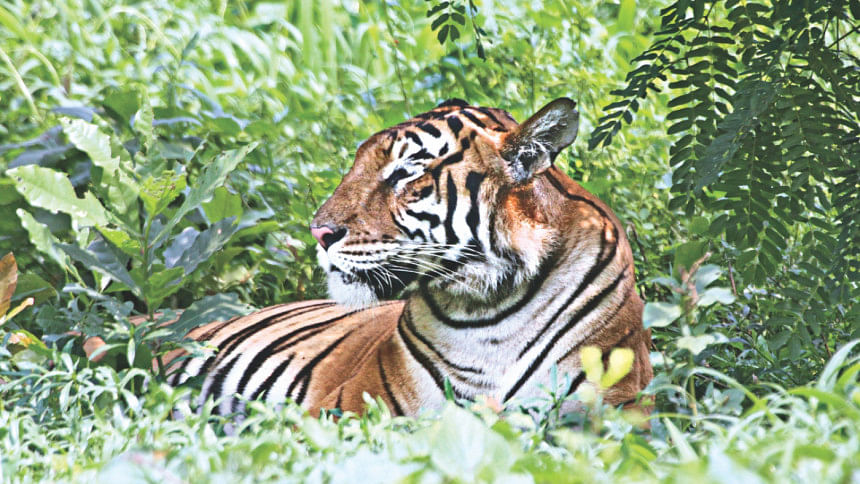Tiger poaching on rise

More than three tigers were poached in Bangladesh every year over the last four years, according to a report published by TRAFFIC, a UK-based international non-profit working on trade in wildlife and plants.
Although Bangladesh has only a few tigers in the Sundarbans, the trend of poaching for tiger skin, teeth, bones, skulls, and other parts of tiger body is increasing, said the report published on Wednesday.
It said 51 tigers were killed over the last 20 years and the average for 2015-18 is 3.1 tigers, which is a lot higher than that of 2000-2014 when it was 2.0.
Officials concerned in Bangladesh, however, denied TRAFFIC’s claims and said poaching numbers and seizures of tiger body parts were reducing.
Mihir Kumar Doe, conservator of forests at the Wildlife & Nature Conservation circle of the Department of Forest, yesterday told The Daily Star, “The number of tiger skin and bone seizures have decreased recently. We have strengthened monitoring and various conservation activities to stop poaching.”
The TRAFFIC report titled “Skin and Bones Unresolved: An Analysis of Tiger seizures from 2000-2018” said a conservative estimate of 2,359 tigers were killed between 2000 and 2018 across 32 countries and territories.
There were 1,142 incidents of seizures reported, most of which were in Asia.
“Out of these, 95.1 percent [or 1,086 incidents] occurred in the 13 Asian tiger range countries, accounting for 2,241 tigers,” according to the report.
On an average, over 60 seizures and body parts of almost 124 tigers were recorded every year,” the report said.
“Vietnam and Bangladesh also reported more than doubling average yearly seizures, and an increase in the number of tigers seized,” the report claimed.
Over the last four years, Bangladeshi authorities mostly seized tiger skins. Bangladesh’s seizures account for 2.9 percent of the worldwide seizures.

India, China, and Indonesia made most of the seizures -- India 463 or 40.5 percent, China 126 or 11.0 percent, and Indonesia 119 or 10.5 percent.
Wildlife experts in Bangladesh said the situation was dreadful as the number reflects only a tiny part of actually poaching incidents.
“When tiger population is poor, poaching in such a rate is really concerning. Usually, only 20 percent poaching incidents are reported,” said Monirul H Khan, renowned tiger researcher and a professor at the Jahangirnagar University’s Zoology department.
According to WildTeam (formerly Wildlife Trust of Bangladesh), 19 incidents of tiger body parts recovery were recorded in Bangladesh between 2011 and 2019. Three cubs, 19 skins, 294 bones, seven skulls, and 45 teeth were recovered.
Prof Md Anwarul Islam, chief executive of WildTeam and a teacher of Zoology department at Dhaka University, said, “We compiled the data when seizures were made by different agencies. There certainly are unreported incidents. That’s why we do not know the real picture.”
Md Moyeen Uddin Khan, conservator of forest, Khulna circle, said the number the report mentioned was unbelievable.
Our record says during the timeframe, 10 tigers died naturally and one during the Sidr cyclone, he said.
“There are 49 village tiger response teams, four co-management committees, and 22 community patrolling groups are there in the Sundarbans area for tiger conservation,” he said.
Bangladesh has taken several steps for tiger conservation, including Tiger Action Plan 2009-2017, National Tiger Recovery Programme, and an amendment to the Forest Act, 2012.
According to the latest tiger census of the government released in May, the number of Bengal tigers in the Bangladesh part of the Sundarbans increased slightly, to 114 in 2018 from 106 in 2015.

 For all latest news, follow The Daily Star's Google News channel.
For all latest news, follow The Daily Star's Google News channel. 






Comments